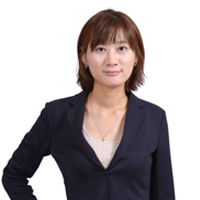Samsung SDI to make turnaround this year: analysts
By Shin Ji-hyePublished : March 29, 2017 - 16:43
Samsung SDI is expected to make a turnaround this year due to the increased battery supply for Samsung’s flagship smartphone Galaxy S8 alongside revenue generated from the polarizing film business, analysts said Wednesday.
Last year, Samsung SDI posted an operating loss of 926 billion won ($831 million), mainly because of its money-losing battery business that accounts for 65 percent of total sales. The battery unit posted an operating loss of 451 billion won due to slowing market demand, the Note 7 fallout and the exclusion of subsidies for Korean batteries in China.
This year, SDI is expected to normalize earnings as it has increased its battery supply for the Galaxy S8, filling in the gap left by Chinese battery maker ATL.
Park Kang-ho, an analyst at Daishin Securities said, “Samsung SDI is expected to make a turnaround in the second quarter by posting an operating income of 21.7 billion won and 40.8 billion won in the third quarter.”
This is due to the increased proportion of the company’s lithium-ion polymer battery for the Galaxy S8, he said.

Samsung has traditionally used batteries from Samsung SDI and ATL for its Galaxy series with the proportion of 7:3. This time, for the latest handset, ATL was excluded, giving a bigger portion to SDI. Alongside SDI, Japanese company Sony also provides a small quantity of batteries for the Galaxy S8.
Alongside the increased supply of lithium-ion polymer battery for the Galaxy S8, growing sales of polarizing film will also help the company make a turnaround, said Kiwoom Securities.
“Sales of SDI’s polarizing film is expected to rise 50 percent year-on-year to 1.1 trillion won as the company’s polaroid film plant in China will meet growing demand for large televisions in the nation,” said Kim Ji-san, an analyst at Kiwoom Securities.
Early this year, Samsung SDI said in a conference call that its polarizing film for organic light-emitting diode displays at the plant in Wuxi, China, is expected to generate sales from the first quarter of this year. The company said in January it was developing flexible OLED polarizing film for a US client, reportedly Apple.
By Shin Ji-hye (shinjh@heraldcorp.com)
Last year, Samsung SDI posted an operating loss of 926 billion won ($831 million), mainly because of its money-losing battery business that accounts for 65 percent of total sales. The battery unit posted an operating loss of 451 billion won due to slowing market demand, the Note 7 fallout and the exclusion of subsidies for Korean batteries in China.
This year, SDI is expected to normalize earnings as it has increased its battery supply for the Galaxy S8, filling in the gap left by Chinese battery maker ATL.
Park Kang-ho, an analyst at Daishin Securities said, “Samsung SDI is expected to make a turnaround in the second quarter by posting an operating income of 21.7 billion won and 40.8 billion won in the third quarter.”
This is due to the increased proportion of the company’s lithium-ion polymer battery for the Galaxy S8, he said.

Samsung has traditionally used batteries from Samsung SDI and ATL for its Galaxy series with the proportion of 7:3. This time, for the latest handset, ATL was excluded, giving a bigger portion to SDI. Alongside SDI, Japanese company Sony also provides a small quantity of batteries for the Galaxy S8.
Alongside the increased supply of lithium-ion polymer battery for the Galaxy S8, growing sales of polarizing film will also help the company make a turnaround, said Kiwoom Securities.
“Sales of SDI’s polarizing film is expected to rise 50 percent year-on-year to 1.1 trillion won as the company’s polaroid film plant in China will meet growing demand for large televisions in the nation,” said Kim Ji-san, an analyst at Kiwoom Securities.
Early this year, Samsung SDI said in a conference call that its polarizing film for organic light-emitting diode displays at the plant in Wuxi, China, is expected to generate sales from the first quarter of this year. The company said in January it was developing flexible OLED polarizing film for a US client, reportedly Apple.
By Shin Ji-hye (shinjh@heraldcorp.com)


















